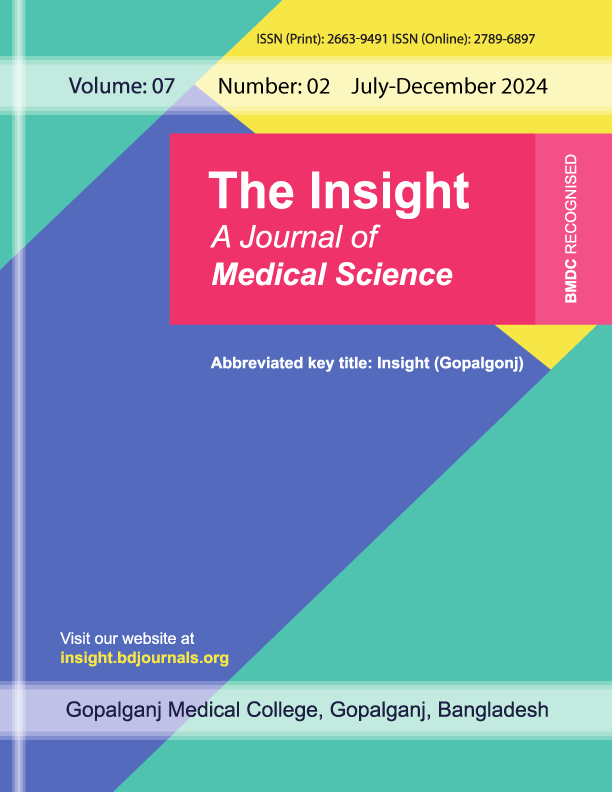Association of Granulomatous Mastitis with Duct Ectasia - A Retrospective Study in the Coastal Region of Bangladesh
Published 07-07-2025
Keywords
- Granulomatous mastitis,
- duct ectasia,
- breast inflammation,
- histopathology,
- Bangladesh
- retro-prospective study ...More
Copyright (c) 2025 The Insight

This work is licensed under a Creative Commons Attribution 4.0 International License.
How to Cite
Abstract
Background: Granulomatous mastitis (GM) is a rare chronic inflammatory breast disease often mimicking malignancy. Duct ectasia (DE) is a benign breast condition characterized by ductal dilatation and inflammation. Emerging evidence suggests a potential association between GM and DE, but data are limited, especially from low-resource coastal regions such as Bangladesh. Objective: To assess the association between granulomatous mastitis and duct ectasia among women presenting with inflammatory breast conditions in the coastal region of Bangladesh, and to identify clinical and histopathological predictors of DE in GM patients. Methods & Materials: A retro-prospective observational study (April 2023-March, 2025) was conducted involving 100 female patients aged ≥18 years with histopathologically confirmed GM and/or DE. Data were collected retrospectively from hospital records over 10 years and prospectively from newly diagnosed cases. Clinical presentations, imaging findings, histopathological features, treatment modalities, and outcomes were analyzed. Multivariate logistic regression identified independent predictors of DE. Results: The mean age was 33.1 years; 82% had a history of pregnancy and breastfeeding. Diabetes mellitus and prior tuberculosis were present in 65% and 35% of patients, respectively. DE was identified in 6.4% by ultrasound, 11.3% by mammography, and 19% by histopathology. Non-caseating granulomas were present in 99% of cases and significantly associated with DE (p=0.038). Independent predictors of DE included increasing age (adjusted odds ratio [aOR] 1.05), history of tuberculosis (aOR 3.00), presence of caseating granulomas (aOR 2.01), and multinucleated giant cells (aOR 3.50). Higher body mass index (aOR 0.86) and corticosteroid treatment (aOR 0.43) were protective against DE. Conclusion: This study demonstrates a significant association between granulomatous mastitis and duct ectasia in the coastal Bangladeshi population, with age, prior tuberculosis, and specific histopathological features serving as key predictors. The findings support the ductal origin hypothesis of GM and emphasize the importance of integrated clinical and pathological assessment to improve diagnosis and management in resource-limited settings.



